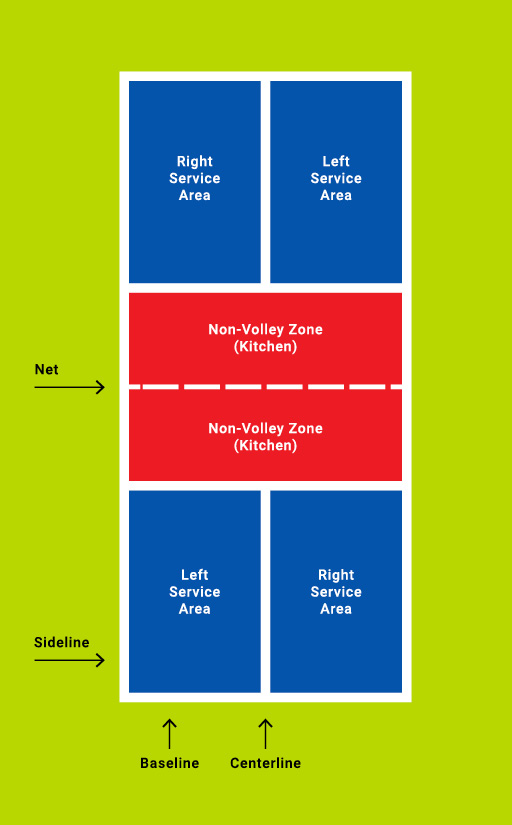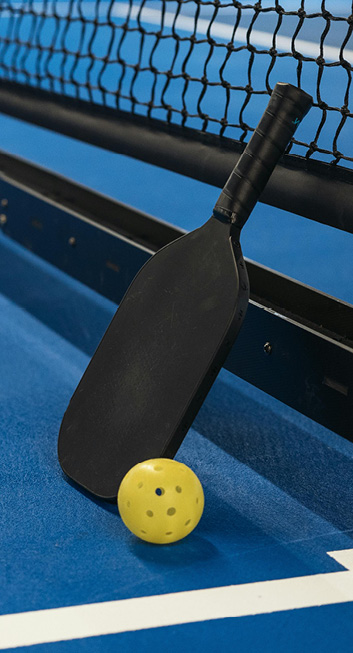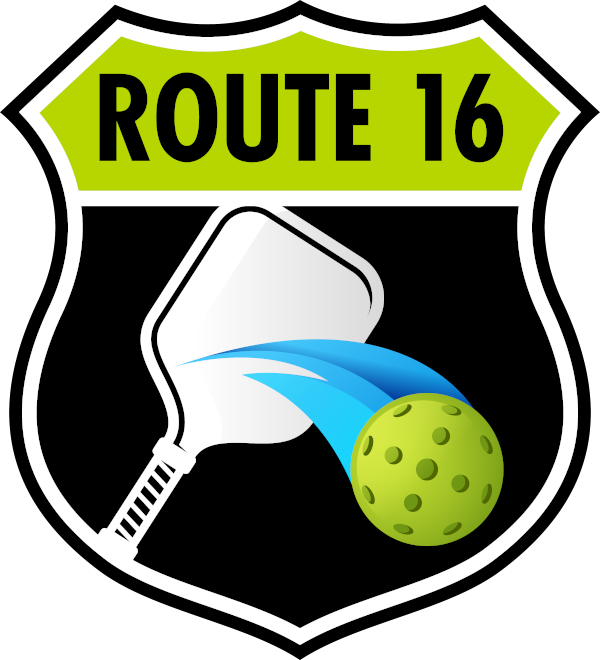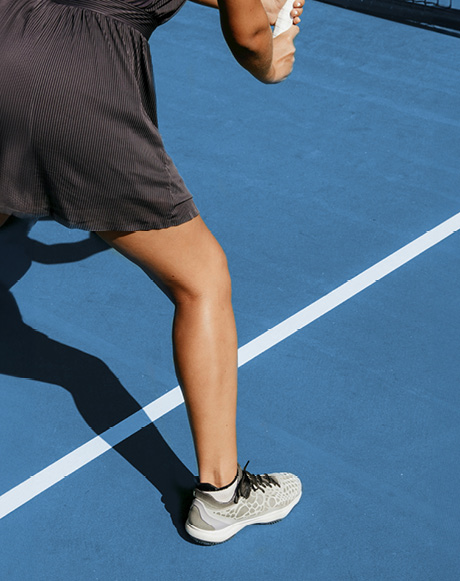Pickleball Rules
These rules are general guidelines. We do not have referees at our facility so rules and scoring is regulated by the players. Talk with your team and opponents to make sure you are on the same page before beginning your match.
What is Pickleball?
Pickleball is a sport played with a flat paddle and a perforated, hollow plastic ball on a netted, marked court. It is sometimes described as a mix of tennis and ping pong, played on a badminton-size court. As with other racket sports, pickleball can be played with either two (singles) or four (doubles) players.
Objective
The object of pickleball is for players to hit the ball over the net so that it lands in bounds on their opponent’s side of the court. Points are scored when the opponent or opposing team cannot return the ball, or when a fault occurs, such as hitting the ball into the net.
Scoring typically goes to 11. The team that wins two out of three games wins the match.
Equipment Needed
Court
Racket/Paddle
Pickleball
Athletic shoes & non-restrictive clothing
Court Setup
A 22×40 foot pickleball court is divided into two sides by a net that is 36 inches high at the sidelines and 34 inches high in the middle. The diagram at right indicates boundaries, service areas and non-volley zones.

Gameplay
Played as singles (one player on each side) or doubles (two players on each side).
A player or team serves the ball diagonally over the net, aiming to land it in the opponent’s service court.
TERMS
RALLY – A rally is the back and forth return of the ball over the net. A fault ends a rally.
FAULT – A fault is an error made by any player during the game. Hitting the ball out of bounds and not letting the ball bounce after a serve are examples of faults.
VOLLEY – A volley occurs when two or more players hit the ball over the net before it bounces on the court.
KITCHEN – Another term for the non-volley zone.
Serving
You can toss a coin or use any other fair method to determine the serving team. The winner chooses whether or not they wish to serve and on which side of the net they would like to start.
Serving always starts on the right (even) side of the court. You must stay behind the baseline and inside the imaginary extension of the sideline while serving.
Server must call the score before every serve.
Serve with an underhand swing, striking the ball with a straight wrist below waist height. Sidearm and overhead serves are not allowed.
You may, but are not required to let the ball bounce before serving. If you prefer to serve the ball on a bounce, drop (but do not propel) the ball from a point at or above shoulder height.
Serve cross-court diagonally from right service area to right service area or left service area to left service area.
The serve must land in bounds past the opponent’s kitchen. It must bounce once before the opponent can return the ball.
If the serving team commits a fault, the first server loses the serve. Depending on whether the score is an even or odd number, their partner then serves from the correct service area.
Play continues until the serving team commits a second fault. Then, the opposing team has a chance for both servers to serve. (See doubles scoring for more details.)
The exception is the first serve of the game. The team presenting the opening serve only serves once. Your partner does not have a chance to serve before play rotates to the other team.
Only the serving team may score points.
What is the Kitchen?
The kitchen, also known as the no-volley zone, is the 7 foot area on either side of the court closest to the net.
Kitchen Rules
You may not volley while standing inside the kitchen, or when one or both feet are on or over the kitchen line.
If you are standing in a serving zone but the momentum of your volley shot carries you into the kitchen, it is a fault and you lose that rally.
Be wary of straddling the kitchen line, with one foot in the no-volley zone and one foot in the service area. If you lift your foot out of the kitchen and return a ball that has not bounced while that foot is lifted, or if you return the ball before resetting your stance, that is a fault.
If the ball bounces, you have the option to step into the kitchen to make your return. If you are already standing in the kitchen you must let the ball bounce before returning it.
Singles Scoring
Only the serving team can earn points.
Serve from the right side of the court when the server’s score is an even number. Serve from the left side of the court if the server’s score is odd. Switch from right to left as you score and continue serving.
Once you lose a rally, your opponent serves.
Calling the score:
The server is responsible for calling the score before each serve. Start by calling your score, then your opponent’s score. If you have just scored your first point, the score is 1-0.
Doubles Scoring
Only the serving team can earn points.
If you win the rally and win a point, you continue serving by switching sides of the court with your partner.
In doubles pickleball, both players on the team have a chance to serve before the serve rotates to the opposing team.
Serving position depends on whether the score is an even or odd number. Serve from the right service area when your score is even and the left service area when your score is odd.
If you serve and your team loses the rally, your partner becomes the server. If your team loses another rally, play switches to the opposing team. Now, each member of the other team has a chance to serve.
Calling the score:
The score must be called before every serve. The score consists of three numbers in specific order: your team’s score, followed by your opponent’s score, followed by the number of the server. So, for the first server in a rally, the last number of the score is 1. When the second server takes over, the last number in the score is 2.
Faults:
The following errors will result in a fault. (This is not a comprehensive list of errors.)
Serve violates serving rules
Serve lands in the kitchen
Ball is hit out of bounds (Anything on the line is in bounds)
Ball is stopped by the net
Volleying before the double bounce
Ball bounces more than once after clearing net
A player is hit by the ball
Volleying in the no-volley zone (kitchen)

Winning the Match
The team that reaches 11 points first wins the game. Alternatively, players can agree to play to 15 or 21 points (common in tournaments).
The winning team must be ahead by at least two points. If a game is tied at 10-10, for instance, play continues until one player or team is ahead by 2 points.
Players change sides of the court after each game.
The third game of the match can be played to 5 points, instead of 11. The team to win two out of three games wins the match.
Route 16 Pickleball offers these rules for the benefit of beginning and intermediate players who are still learning and improving their pickleball techniques and knowledge. Instructions are not intended to be comprehensive or to reflect recent revisions. For complete official rules, visit USA Pickleball.

